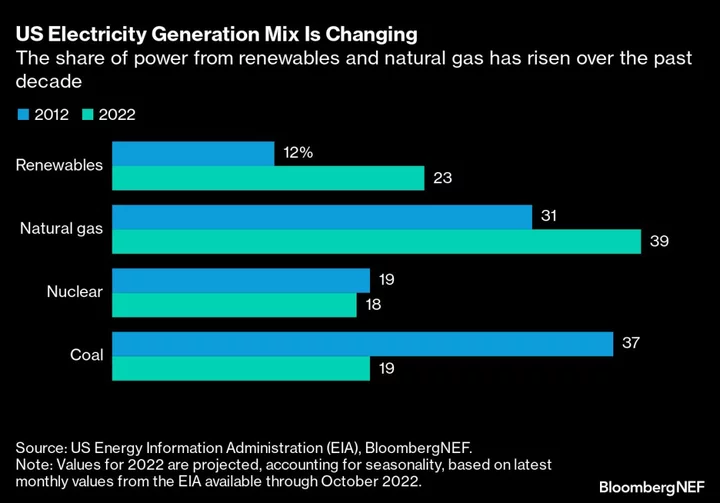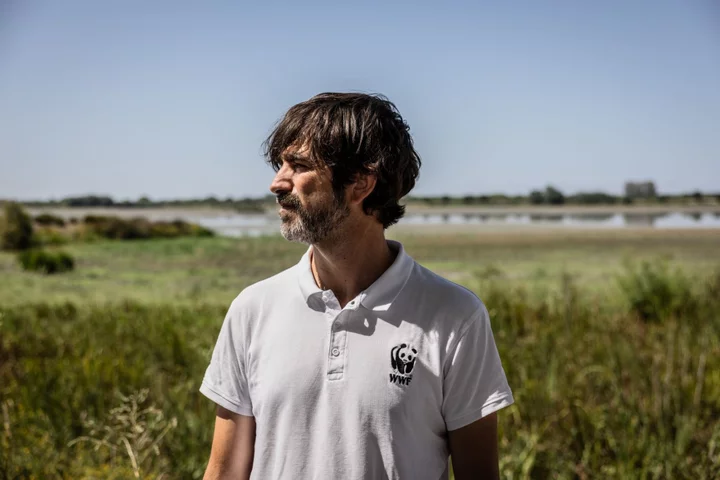Airports around the world are relocating sensitive electrical equipment to rooftops to protect it from flooding, reinforcing runways to handle extreme temperature swings and revving up air conditioning as climate change complicates operations.
In New York, the $19 billion redevelopment of John F. Kennedy International Airport includes preparing for more extreme weather events such as storm surges and coastal floodings. Up north in Alaska, melting permafrost is forcing fortification of runways, while in Europe, contractors are studying building materials that allow runways to handle bigger temperatures swings or redesigning buildings for sweltering summers.
“The impact of climate change has humbled us all,” said Rick Cotton, executive director of the Port Authority of New York and New Jersey, which owns JFK along with the smaller LaGuardia and Newark airports.
While the aviation industry has promised to achieve net zero carbon emissions by 2050, harsher weather conditions are already forcing a rethink of critical infrastructure in airports and airfields across the world. The rise in sea level alone means airports may have to spend $57 billion to maintain current risk levels by the end of the century, according to a Climate Risk Management report published in 2021 by Newcastle University and the Tyndall Centre for Climate Change Research in the UK.
Heat waves this summer across the US, Europe and Asia put pressure on cooling systems at airports — which are crucial not just for keeping passengers comfortable but also ensuring critical electronic systems don’t overheat. Sudden rainstorms in August made planes at Frankfurt, Germany’s busiest airport, look like they had been parked in a lake, while last year’s hot temperatures in the UK caused London Luton Airport’s runway to buckle.
Runways contain different mixtures of asphalt depending on a region’s climate. A surface in Dubai, for example, is made up of a different composition to withstand higher temperatures than one in the UK, which is now sweating under hot temperature for long periods.
The New York Port Authority is making changes to its low-lying, coastal airports, including moving electric substations to the roofs of buildings from ground level, said Cotton. To protect the JFK hub, the authority also plans to elevate or relocate buildings to less flood-prone areas of the hubs and install flood-control devices.
Cotton said the agency has been on “high alert” regarding the threats of climate change and learned lessons from Hurricane Sandy in 2012, which forced water over the seawall at LaGuardia, wrecking electronic equipment on the ground and flooding the airfield.
“We’ve designed the terminal so that critical infrastructure would be protected in the event of flooding due to rising sea levels or storms, and we added deployable flood barriers as an additional precaution,” said Helena Williams, CEO of JFK Millennium Partners, which is leading a $4.9 billion redevelopment of Terminal 6 at the airport.
In the icy climates of Alaska, airports and other vital infrastructure are built on permafrost, a constantly frozen layer on or under the Earth’s surface. But with rising temperatures, some permafrost layers have thawed, damaging roads and runways. Alaska’s Department of Transportation has been helping airfields such as Noatak and Deering, two strips in the northwest that are popular with charter flights, install insulation in the ground to thermally protect permafrost, as well as flatten embankment slopes to stabilize the runways, according to Matt Billings, a geotechnical engineer for the agency’s northern region.
Over in Europe, Amsterdam’s Schiphol Airport has already elevated its runways in the center and sloped them down towards the edges to make sure water drains properly as rainfall intensifies. Schiphol is also working on a rainfall disposal system that can cope with increasing precipitation for the next century, according to an official.
The airport is creating shadowed areas along walking and cycling routes, improving ventilation, planting trees and designing heat-resistant surfaces so that buildings and the surrounding urban area don’t overheat.
In France, water scarcity and high temperatures in certain regions have led to to restricted water usage. Nice Airport in the south of France has over the past year cut back on the amount of industrial water it uses for cleaning, said Isabelle Vandroit, the head of sustainable development and environment at L’Aéroports de la Côte d’Azur.
Higher temperatures even affect the laws of physics underpinning flying itself. Warm weather means the air is less dense, creating reduced lift for the wings and power for the engines. That, in turn, can require longer runways because planes need longer take-off rolls, or it forces airlines to reduce seating on aircraft to cut back on weight, depriving them of revenue.
Urgency is building in the aviation industry to adjust to climate change, against the backdrop of rebounding post-pandemic travel and worsening weather conditions, according to a Eurocontrol report in March. The European airspace coordinator urged airports and airlines to adapt and become more resilient now to avoid facing damage to infrastructure and operations in the future.
Runways can expand and crack when exposed to vast temperature swings that are becoming more common, particularly when they were initially conceived to withstand far narrower temperature ranges. Last year in August, all flights were halted temporarily at the Royal Air Force's Brize Norton base because high temperatures had made the runway unsafe to use.
As extreme weather events become more frequent, more airports are likely to choose material mixes that can sustain both hot and freezing conditions which are more costly, according to Alex Walton, a senior civil engineer at construction giant Arup Group Ltd.
Some of the hundreds of airports that Arup works with have plans to redevelop their airfield system or choose new materials for cooling and ventilation systems in terminals. After a slowdown during the pandemic, more airports are now prioritizing a redesign, said Walton.
Costs of climate-related upgrades depend on the location and issues associated with each airport. Daily inspections and maintenance of runways amount to at least tens of thousands of dollars per year and could increase with climate change, said Thomas Budd, a senior lecturer at Cranfield University in England. A major repair to a runway can quickly run into hundreds of thousands of dollars and cause major disruptions, whereas a total resurfacing can cost as much as $100 million.
The majority of airports in the world weren’t designed to handle temperatures over 50 degrees Celsius, Budd said. More airports could potentially suffer from pavement defects and other infrastructure issues if climate change continues on its current trajectory, potentially causing significant disruption for global air travel.
“Climate change is happening now so we don’t have the luxury of a great deal of time to get this ready,” Budd said. “The time for this was probably 20, 30 years ago.”









